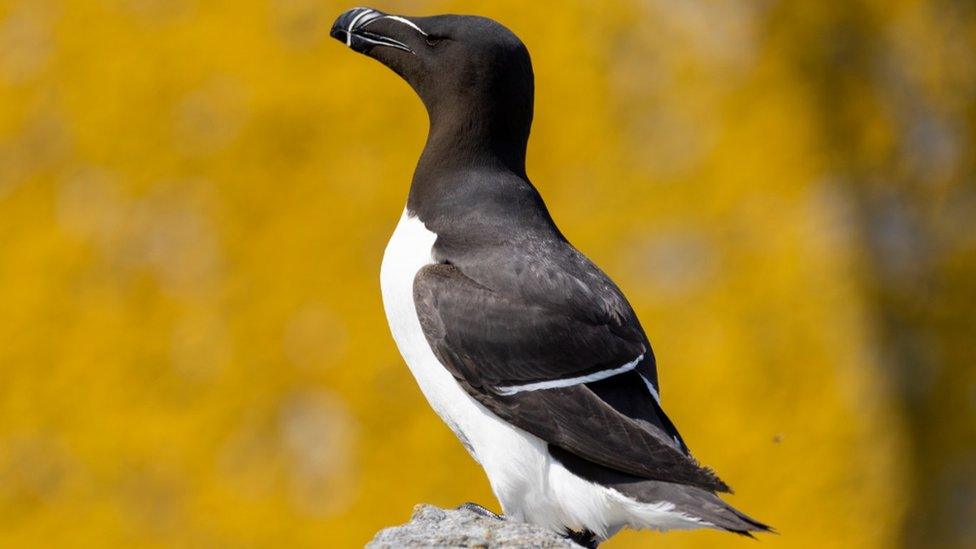New maps reveal Scotland's seabird breeding hotspots
- Published

Data about the razorbill was included in the maps
Maps identifying the breeding hotspots of some of the most threatened seabirds have been published for the first time.
Scientists at RSPB Scotland tracked the life of kittiwakes, guillemots, razorbills and shags as they forage at sea during the breeding season.
This has revealed huge swathes of Scotland's coastline are vital for the four seabird species.
The birds have all been classed as "birds of conservation concern" due to falling populations.
RSPB Scotland tracked the movements of kittiwakes, guillemots, razorbills and shags for five years.
The conservation charity then paid for this data to be applied to maps to identify the most important areas used during breeding season.
It is hoped the maps can be used to inform decisions being made about fishing rights and new offshore wind farm developments.
An RSPB map showing the breeding hotspots, using four different methodologies, for the kittiwake around the UK
Dr Ian Cleasby, lead author of the research, published in the journal Biological Conservation, said the hotspots cover areas larger than the existing Special Protection Areas for birds.
He said: "The results from this research provides better evidence that allows us to identify important areas of sea that should be part of protected areas and help to improve how we plan for development at sea to reduce conflicts between the needs of our seabirds and human activities at sea."
The mapping reveals that the Scottish coastline, particularly the east coast, is important for kittiwakes, guillemots and razorbills. For shags, hotspots were smaller than observed in the other three species and were typically found in inshore coastal waters.
The hotspot mapping work was funded by RSPB and was applied to existing distribution maps of seabirds, such as the kittiwake
The shag is a red-listed bird, the highest level of conservation concern, as a result of its sharp population decline
Charles Nathan, head of planning and development at RSPB Scotland, said: "This research can help to direct development to areas where the risks to nature are lowest and focus conservation efforts to where they can best boost the recovery and resilience of our seabirds."
A total of , shaped by species ecology and conservation goals. were applied to the breeding data for each of the four seabirds and they identify similar key sites, but vary in total area covered.